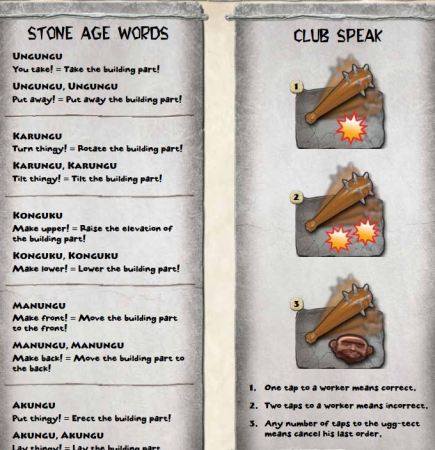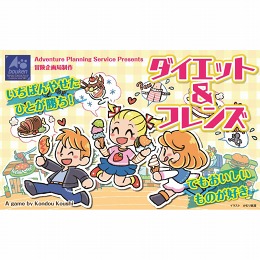
I’ve played several new games lately and as per the usual I am sharing some of them with you! As always this article serves as a sort of mini-review for multiple games at once, and I hope you find the information within useful when considering what games to play/buy next!
Dice City

Photo from alderac.com
I had been looking forward to playing Dice City since I first heard about it way earlier in 2015, and I have been very happy with the game so far! Recently Sergio and I sat down to play it head to head as we built our cities, vying for control of the proud nation of Rolldovia! *music starts* “Hail! Hail, Rolldovia! A laaannndddd I didn’t make uuuupppp!!!” Also, if you get that joke then you’re awesome!
This was my second time playing Dice City and Sergio’s first time playing. On my first attempt at the game I decided to go a military heavy strategy, a plan that backfired wonderfully as I came in last place to the economic powerhouses that were my opponents at The Jester’s Court. So, instead of doing the military strategy again (because I did so poorly with it the first time), I decided this time to instead do a military strategy!

Photo from alderac.com
Sergio immediately caught on to the fact that the Trade Ships in the game (3 stacks of always available cards with varying purchasing costs and victory point values) were a very viable strategy, and pursued that route. Not me, though! I, having learned in the first game that I was no good at the military strategy, decided to try out a military strategy. You see where this is going right?
In Dice City players can purchase new buildings from a common pool of cards and replace the starter positions on the board. A player can place any building on top of any other building, thus increasing the odds of rolling their 5 dice and activating a military/economic/trade/resource producing/etc. type of building on their turn. Each of a player’s dice are a certain color, and just as their are 6 sides to each of those 5 dice the player board contains 6 rows of buildings in similar colors. The color of the dice and the number which is rolled determines which buildings are activated. Click the image below for a larger view.

Photo from alderac.com
Sergio is generating resources like a fiend and is almost buying a Trade Ship per turn (worth 20, 10, and 5 points for the different levels) while I am generating enough military power to defeat a single Bandit (also always available to players) per turn, yielding 2, 3, or 4 whole victory points! Needless to say, I chose to end the game by buying the last Trade Ship in a stack. Since it was the second Trade Ship stack to be depleted, the game ended after Sergio’s final turn.
Outcome – I lost… again… I have proven that I am not very good at the military strategy in Dice City. I think next time I might try some sort of military strategy.
Ugg-Tect

Photo from fantasyflightgames.com
In Ugg-tect players divide into teams and attempt to build “simple” structures using only the primitive gestures, made-up words and physical beatings of their team leader! Yes, all of that is accurate.
Ugg-tect comes with two inflatable clubs which are used to both correct your team members when they make a mistake AND to let them know that they are on the right track. The leader of the team, the ugg-tect, draws cards which have diagrams on them. Using a series of made up words from a word key and gestures such as shaking their hips, raising boths above their head, and stomping their feet, the ugg-tect tries to let their team know how to arrange the game’s wooden components. Laura, Jordan, Cam, and Alice were my minions as I selflessly took on the role of the person in charge of throwing tantrums and inflicting corporal punishment on them.

Photo from fantasyflightgames.com
Each team has 15 minutes to complete the diagrams from the cards as they can. Like the hero I am I was merciless in dealing out beatings with my spike club when my team members made mistakes. Laura, at one point following a few choice blows to the head, complained to me that the clubs hurt. So maybe I got a little drunk with caveman-like power, but I really wanted to show how good of a leader I am by beating them to the best of my ability… you understand.
Outcome – As a direct result of my clubbing prowess my team was victorious! Sarah’s team, suffering from a severe lack of brutal beatings, didn’t even come close to us! I hope Laura learned a valuable lesson during that game…
Diet & Friends

Photo from global.rakuten.com/
Diet & Friends is a card game where players are friends attempting to lose weight. The cards represent different fattening foods and the game is similar to Go Fish, only… different. Players have their hands of cards and attempt to lure their also dieting friends to cheat on their diets by asking if they would like to go and eat a certain type of food. If the friend whom they ask declines the invitation, that means that they don’t have that type of food in their hand of cards. If the friend accepts the invitation then that means that they have that type of card and the inviter can unload all types of that card to the invitee.
This is dangerous, of course, because if the person Player A invites to lunch (player B) for, say, Cutlets (one of the types of food cards) and Player B doesn’t have any, it’s still a good bet that Player A does have that type of card. Player A most likely wanted to unload their Cutlet cards onto Player B, so on their next turn Player C might remember that Player A asked Player B out for Cutlets and give Player A all of their Cutlets! Confused? Yeah, so was I for most of the game.
The types of cards represent suits, and the suits are numbered from 1 to 8 in terms of how much weight you’ll gain if you’re still holding those cards at the end of the round. For example, if at the end of the round you’re still holding an 8kg Beer card and a 3kg Steak card, then you gain 11kgs. The person who managed to get rid of all of their cards loses the combined gained weight of all of the other players. The player who has lost the most weight at game’s end is the winner!
The game is played over multiple rounds and there’s a variety of other actions players can take, such as dieting or throwing parties. We’re not going to go into all of that, but just know that there’s a lot to this small, card game.
Outcome – By game’s end I had gained something like 87kgs and wasn’t even close to winning. Cam won and shamed us all into entering a food-induced depression.
